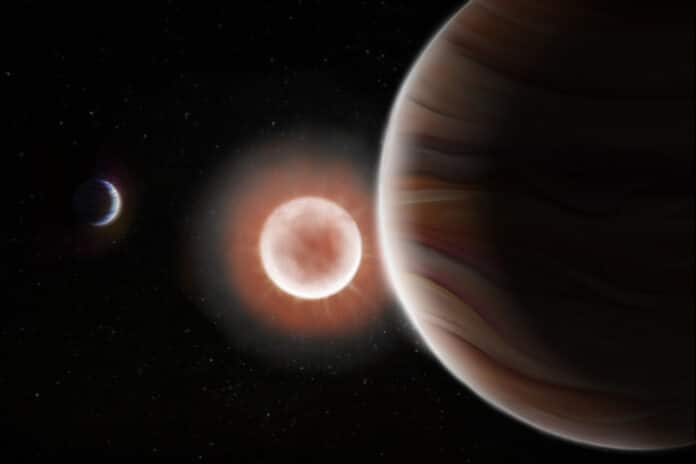Using data from NASA’s Transiting Exoplanet Survey Satellite, or TESS, astronomers at MIT, the University of New Mexico, and elsewhere have discovered a rare system containing two long-period planets orbiting TOI-4600. One planet has an orbit of 82 days, whereas the second planet orbits the star every 482 days.
TOI-4600 is a nearby star located 815 light years from Earth. The second planet has the longest period that TESS has detected to date. It is also one of the coldest, with a temperature of roughly -117 degrees Fahrenheit, compared to the inner planet’s more temperate 170 degrees.
Both planets are likely gas giants. The composition of the inner planet includes more of a mix of gas and ice.
Team member Katharine Hesse, a technical staff member at MIT‘s Kavli Institute for Astrophysics and Space Research, said, “These longer-period systems are a comparatively unexplored range. As we’re trying to see where our solar system falls compared to the other systems we’ve found, we need these more edge-case examples to understand that comparison better. Because many systems we have found don’t look like our solar system.”
One pipeline detected a potential transit in 2020 from a star near the constellation Draco in the northern hemisphere. The star was designated as a TESS Object of Interest (TOI-4600). The TESS Single Transit Planet Candidate Working Group, a group of researchers from MIT, UNM, and other institutions that search for indications of longer-period planets in single-transit events, examined the initial transit in great detail.
The team searched other TESS data sectors for the star and discovered three other transits identical to the first. The scientists could infer from these four occurrences that the cause was the planet TOI-4600b, which has an orbit relatively long at 82 days. The researchers also discovered a fifth transit. However, it was late with the others.
Last year, in July 2022, scientists saw two things: one transit that appeared in the same 82-day cycle, which further confirmed the existence of a long-orbiting planet, and a second transit, which was detected 964 days after the previous, out-of-sync transit.
The amount of light dimmed during the past two transits was similar, indicating that a single object orbiting the star every 964 or every 482 days was responsible for both. The scientists reasoned that TESS might not have been looking in the star’s direction at the time of the planet’s 482-day crossing. The team determined that the 482-day orbit was more likely after simulating what a planet might look like with both orbital periods using a computer.
The astronomers focused on the star using several ground-based telescopes to ensure they had discovered two long-period planets. These observations assisted the scientists in ruling out false-positive hypotheses, such as the main star being eclipsed by a second star. They concluded that the star does, in fact, house two long-period planets: TOI-4600b, a warm, Jupiter-like giant, and TOI-4600c, a cold, icier giant and the longest-period planet ever discovered by TESS.
Hesse said, “It’s relatively rare that we see two giant planets in a system. We’re used to seeing hot Jupiters close to their stars, and we usually don’t find companions to them, let alone giant companions. This system is a unique configuration.”
The results are published today in Astrophysical Journal Letters.
